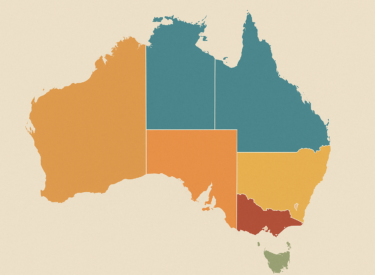
Key takeaways
ABS data shows total building approvals rose 11.3% in June after a 4.2% rise in May.
Unit approvals jumped 33.1%, driven by NSW (+31.5%), while detached house approvals fell 2%.
Stronger retail spending signals consumer optimism and a greater willingness to make large purchases like property.
Falling interest rates will likely boost this trend further by improving household cash flow and sentiment.
Strong auctions indicate active buyers despite higher stock levels.
If you're interested in property, you'd be aware that prices are ultimately a function of supply and demand and right now, both sides of that equation are moving in interesting ways.
On the supply side, the latest ABS figures show building approvals rising again. That might sound like a positive sign, but we need to dig deeper.
Higher approvals today don’t immediately translate into more homes tomorrow - and with construction timelines, finance challenges, and labour shortages still in play, this data gives us an important early read on how much new stock might actually come onto the market in the months and years ahead
Of course, understanding future supply is critical at a time when population growth is fuelling demand.
But supply is only half the story. To really understand where our property markets are heading, we also need to track consumer behaviour, and while we discuss property buyer and seller confidence in these weekly shows, today I want to discuss the latest retail spending figures.
Retail sales are a window into how households are feeling about their finances. When people are spending more freely, it usually signals rising confidence and a willingness to take on larger financial commitments like buying property.
And when spending slows, it can be a warning sign that households are tightening their belts.
In this week's Property Insider Show, Dr. Andrew Wilson and I discuss both of these important indicators - building approvals and retail sales - alongside what’s happening in our auction markets, to see how supply, demand, and sentiment are interacting.
Why we’re watching building approvals so closely
Watch this week's Property Insider Chat as Dr. Andrew Wilson explains how the latest ABS figures show that home building approvals rose 11.3% in June, following a 4.2% rise in May.

Unit approvals surged 33.1% in June, driven by a big jump in New South Wales, where total approvals were up 31.5%.
However, detached house approvals actually fell 2%, highlighting the different dynamics at play across dwelling types.
At first glance, this looks like a win for supply - but context matters. Annual growth levels remain subdued. Quarterly trend data is easing.

Compared to the 2016 peak, total capital city home building approvals are down 28% and unit approvals are down nearly 50%.

This means that while we may see more projects entering the pipeline now, we are still well below the levels needed to meet Australia’s growing housing demand - especially with the current levels of population growth.
And all the new apartments to be completed will have to come on the market at much higher prices than current market values to make these projects financially feasible.
This means established apartments are available today with considerable inbuilt equity.
Retail spending: the consumer confidence barometer
Retail spending is one of the best real-time measures of household confidence.
In this week's Property Insider Chat, Dr. Andrew Wilson explains that the latest data shows retail sales were up 1.2% in June and up 4.9% over the past year.

Spending on goods was +1.3% over the month and +3.4% over the year, while spending on services was -0.5% over the month and +6.6% over the year.
Spending on discretionary (non-essential) items was +0.5% over the month, as was spending on non-discretionary (essential) items.
This growth comes despite slower migration and easing inflation. It also follows a 0.5% increase in May.

Why does this matter for property? Because when consumers are feeling optimistic and they are spending more freely, they’re more likely to commit to bigger purchases, including homes.
Lower interest rates will only reinforce this trend by freeing up household cash flow and further lifting sentiment.
Auction markets remain resilient
Capital city home auction markets have continued to report strong results over the weekend, with buyer and seller momentum clearly on the rise.
National clearance rate 72.9%, above last week (71.0%) and last year (68.3%).
Auction volumes remained elevated nationally, yet strong listings aren’t denting buyer demand.
Seller momentum is improving across capitals, with competitive bidding underpinning solid results.

Putting it all together
When we look at these three indicators side by side, a few themes emerge:
- Future Supply is Still Tight - Even with recent jumps, building approvals are nowhere near enough to offset the undersupply created over recent years.
- Demand Drivers Are Strengthening - Retail spending is holding up well, signalling that consumer confidence is improving. This often translates into stronger property demand.
- Market Sentiment Is Positive - Robust auction clearance rates show that buyers remain active, even as choice improves.
The current data suggests that tight supply will continue to support property price growth in the medium term.
At the same time, improving sentiment could trigger stronger property price growth as interest rate cuts arrive.
Now may be a strategic window to buy before confidence fully returns and competition heats up even further.














